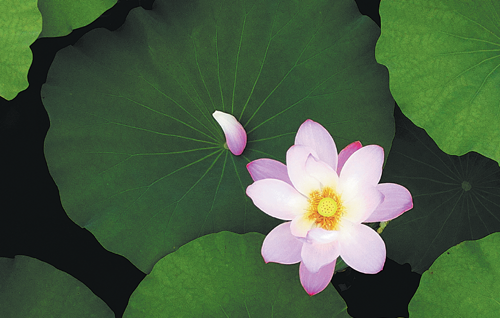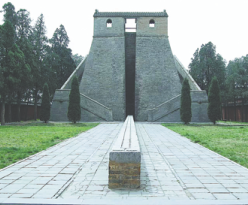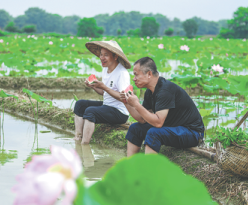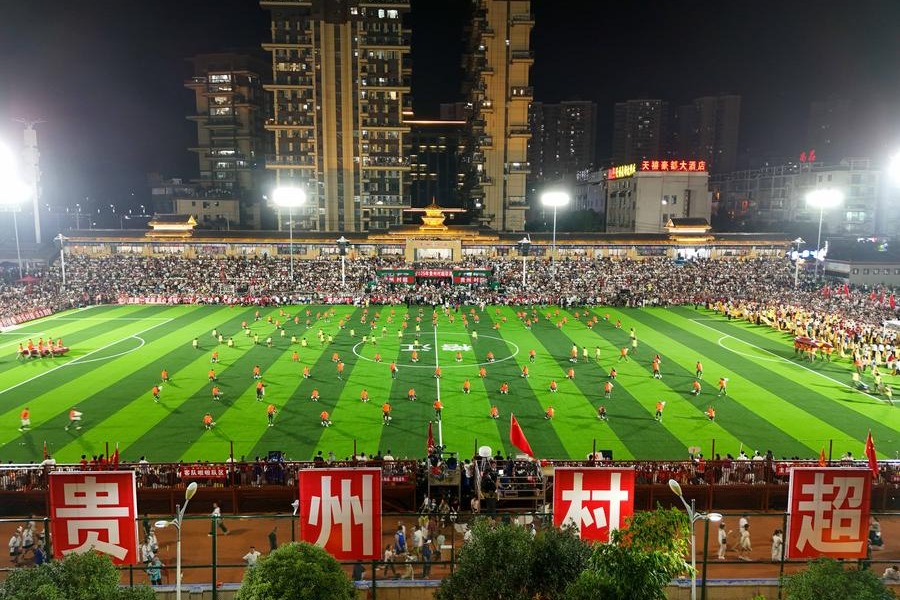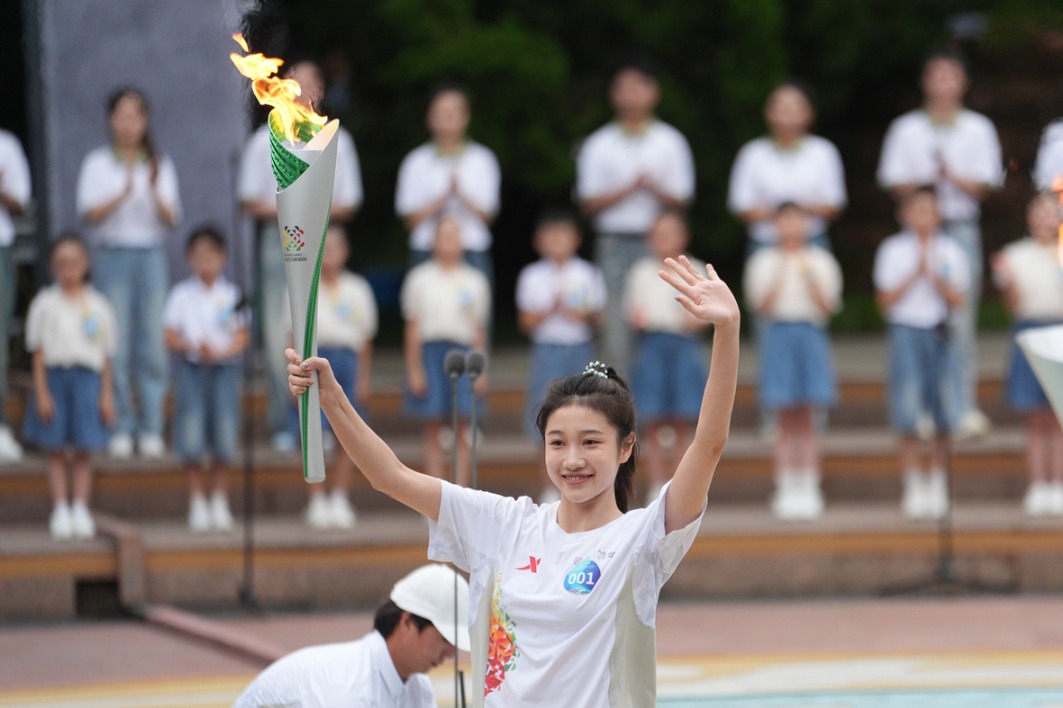Longest day is a turning point
Xiazhi does not just represent a key date in the Twenty-Four Solar Terms but is an important pivot marking a keenly observed time of year, Wang Ru reports.

There is a day that is celebrated, without prior agreement, in many countries of the world, considered special by people who observe the movement of the sun. On its eve, in England, people rally to Stonehenge, a mystical ring of monoliths erected by ancient devotees, to welcome rise of the sun. In Latvia, people travel from the cities to the countryside to gather, eat and sing in celebration.
Chinese people attach equal importance to this day, as the Summer Solstice, or xiazhi in Chinese, which falls on Tuesday this year, is the tenth of the traditional Twenty-Four Solar Terms.
In the Northern Hemisphere, Summer Solstice occurs when the sun is directly over the Tropic of Cancer. It is the longest day of the year in terms of daylight. After the solstice, the subsolar point begins its migration south, and daytime gradually shrinks.
Despite what many might think, with it being at the height of summer, xiazhi is not the hottest time of year. A Chinese folk saying goes: "The summer is not hot enough until Summer Solstice".
After xiazhi, the temperature will continue to increase. Just like Winter Solstice is start of "nine nine"-a system to record the following 81 days-in winter, this year, Tuesday marks the beginning of the "nine nine" of summer.
Chinese people used to count the days in periods of nine, and then summarize the conditions during each period in songs. One example of a summer nine nine song describes the increasingly warmer weather following the Summer Solstice, before it finally starts to turn cold.
"In the first and second nine, you always need a fan in the hand. In the third nine, you can find ice water as sweet as honey. Your clothes are always soaked with sweat in the fourth nine. You can feel gentle wind blow the branch in the fifth nine. The sixth nine is a good time to relax in a cool place. During the seventh nine you need to be covered with quilt when sleeping. Don't catch a cold in the eighth nine. Everybody finds their coat in the ninth nine."
Ancient Chinese believe the Summer Solstice is the time when yang energy is at its most potent, and gets weaker as the days progress, giving way to yin energy, which increases in strength. That is to say, Summer Solstice is the turning point between yin and yang, while Winter Solstice marks the reverse of that energy flow.
As a result, typical phenomena of xiazhi include deer-which symbolize yang energy-shedding their antlers as yin energy starts to grow. Also because of the rise of yin, cicadas start to chirp, and people start hearing them more often. Banxia, an herb strong in yin energy, begins to grow, marking a point when living things with yin energy begin to thrive, while those strong in yang energy gradually wither.
According to Lyu Hongjun, a scholar of the Twenty-Four Solar Terms, xiazhi is very important since it is one of the first solar terms.
"China's Twenty-Four Solar Terms didn't appear all at once, but developed over a long period. In the Western Zhou Dynasty (c.11th century-771 BC) the two solstices and equinoxes appeared. Then in the Spring and Autumn Period (770-476 BC), the start of the four seasons were added to the system. During the Warring States Period (475-221 BC) the rudiment of the Twenty-Four Solar Terms was basically established, and their names were decided across the Qin (221-206 BC) and Han (206 BC-AD 220) dynasties," Lyu says.
In Dengfeng city, Central China's Henan province, two ancient structures tell the story of the observation of the sun by ancient Chinese, and the origin of the Twenty-Four Solar Terms.
According to historical documents, Ji Dan, the Duke of Zhou, a famous politician of the Western Zhou Dynasty, established a sundial platform in Dengfeng, which at the time was considered to be the center of the earth, to observe the movement of the sun.
The platform is a guibiao, an ancient Chinese sundial with a gui, a horizontal scale on the ground extending to the north, and a biao, a perpendicular bar standing upright. As the sun moves, the shadow of the biao is cast on the gui, and the length of the shadow at different times helps to trace variations of the sun's movement.
"It is said that the ancient Chinese found a day when the shortest shadow cast was about 50 centimeters, and that was the start of summer's hottest period. That is how the Summer Solstice was discovered," says Lyu, who is also director of the office of Dengfeng chronicles.
Ji's original platform was made from wood and earth, and being hard to preserve, had to be replaced many times over the years. Standing in its place today is a permanent guibiao, rebuilt using stone during the Tang Dynasty (618-907), that continues to tell stories about ancient Chinese endeavors in astronomy.
About 20 meters from Ji's platform is another observatory, built under the direction of Chinese astronomer Guo Shoujing (1231-1316) during the Yuan Dynasty (1271-1368), which has a similar structure to a guibiao, but is much larger in scale.
Guo built 27 observatories throughout the Yuan territories, and the one in Dengfeng is the only one that still exists. Based on his observations over the course of two years, he developed a new calendar called Shoushi Li (season-granting calendar), calculating a year to be 365.2425 days, just seconds off the current measurement of a year. The calendar was used for more than 360 years.
Both the sundial platform and observatory are part of the Historic Monuments of Dengfeng in "The Center of Heaven and Earth", which was inscribed on the UNESCO World Heritage List in 2010.
Due to such history, people in Dengfeng highlight the Summer Solstice and celebrate its arrival with a festival featuring various activities, including paying tribute to Ji, watching the shadow cast by the sun on the guibiao, and art performances.
According to Lyu, such celebrations, especially those paying tribute to Ji, have been held since ancient times, both in an official and folk capacity. After the end of the Qing Dynasty (1644-1911), official-level celebration was suspended, but people have never forgotten it and folk events continued.
"People want to express their gratitude for Ji, who is believed to have been the founder of the Twenty-Four Solar Terms. They have played a huge role in guiding agricultural production as a standard farming timetable. It promoted the development of agriculture, and has helped feed the nation," says Lyu.
While in modern China, xiazhi is simply known as one of the solar terms, in ancient times it was a major festival. In the Song Dynasty (960-1279), the festival offered officials a holiday of three days. A grand sacrificial ceremony, led by the incumbent emperor, was also held on the Summer Solstice during the Ming (1368-1644) and Qing dynasties.
According to Guo Wenbin, a scholar of traditional culture, many customs from the ancient Summer Solstice festivals, including dragon boat races, are now celebrated as part of events, such as Dragon Boat Festival, or Duanwu Festival.
"We often believe Duanwu was created to commemorate patriotic poet Qu Yuan of the Warring States Period, who committed suicide on the fifth day of the fifth lunar month. But, actually, before the death of Qu, Chinese people already celebrated Duanwu, which often fell between Grain in Ear, the ninth solar term, and Summer Solstice. Many customs of Duanwu we follow now are related to those two solar terms," says Guo.
A folk saying goes: "After eating Summer Solstice noodles, daylight will become shorter day by day". Since the Summer Solstice is often a time when people harvest wheat, it's a tradition to eat noodles. The Summer Solstice festival in Dengfeng includes an activity whereby nearly a thousand people eat noodles together.
As Summer Solstice represents the longest day, some environmental advocates have encouraged the switching off of lights for a couple of hours as a symbolic, and practical way, of saving energy. Related activities have been held in many cities across China and the world. This xiazhi, maybe more people will "see the light" and take the initiative to go outside and enjoy an extra few hours of sunshine.
Shi Baoyin in Zhengzhou contributed to this story.
